

Listen
to podcast
discussions with scientists and MIT students in the field of Nanomechanics*
in conjunction with the Spring 2007 MIT undergraduate engineering
course:
3.052 Nanomechanics of Materials and Biomaterials (course website on Stellar)
*Nanomechanics is the study of forces, motions, energies,
and deformations over distances of ~ < 100 nanometers or involving
forces ~ < 100 nanoNewton. 1 nanoNewton is 10^-9 times the force
that produces an acceleration of 1 meter per second per second when
exerted on a mass of 1 kilogram.
Your Host is: Professor Christine Ortiz (email: cortiz@mit.edu, website: http://web.mit.edu/cortiz/www/), Department of Materials Science and Engineering, MIT
Table of Contents:
The MIT Podcasters :
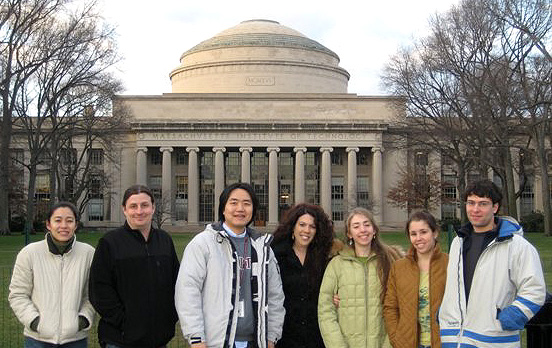
Left to Right; Jacqueline Greene (senior undergraduate, Materials Science and Engineering), Matt Russell (MIT Audio visual specialist), Jae Choi (graduate student, Civil and Environmental Engineering Dept.),Christine Ortiz (Prof. Materials Science and Engineering), Laura Daher (senior undergraduate, chemistry Department), Danielle France (graduate student, Biological Engineering Division), Ben Bruet (graduate student, Materials Science and Engineering Department). Not pictured : Leanne Veldhuis (junior undergraduate, Materials Science and Engineering Department), Mike Vasquez (junior undergraduate Materials Science and Engineering).
Laura gets a gold star for attending every single podcast !!!! ![]()
MIT jargon used in podcasts :
IAP = Independent Activities Period = no required classes
in January (!)
Building 13 = building behind the dome where the podcasts are held (in Prof.
Ortiz' office)
Course 3 = undergraduate materials science and engineering major
3.032 = undergraduate course: mechanics of materials
UROP = undergraduate researcher
TA= teaching assistant
Musical intro is PODSAFE: Trauma on the Dancefloor by Briarius.
1.
Introduction and Explanation of the Project from Professor Ortiz and the MIT
podcasters
Downloads: MP3
- Nano on Wikipedia
2.
Nanomechanics of Cartilage Aggrecan (Recording date 01/08/07)
Guests: Professor Alan Grodzinsky (MIT, Electrical Engineering and Computer
Science, Mechanical Engineering, Biological Engineering) and Professor Delphine
Dean (Clemson U. Bioengineering)
Citation : Dean, et al. J. Biomech. 2006 39, 14 2555
Links : MP3
- Cartilage
- Aggrecan - Aggrecan
[2]
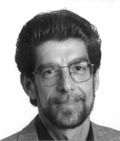
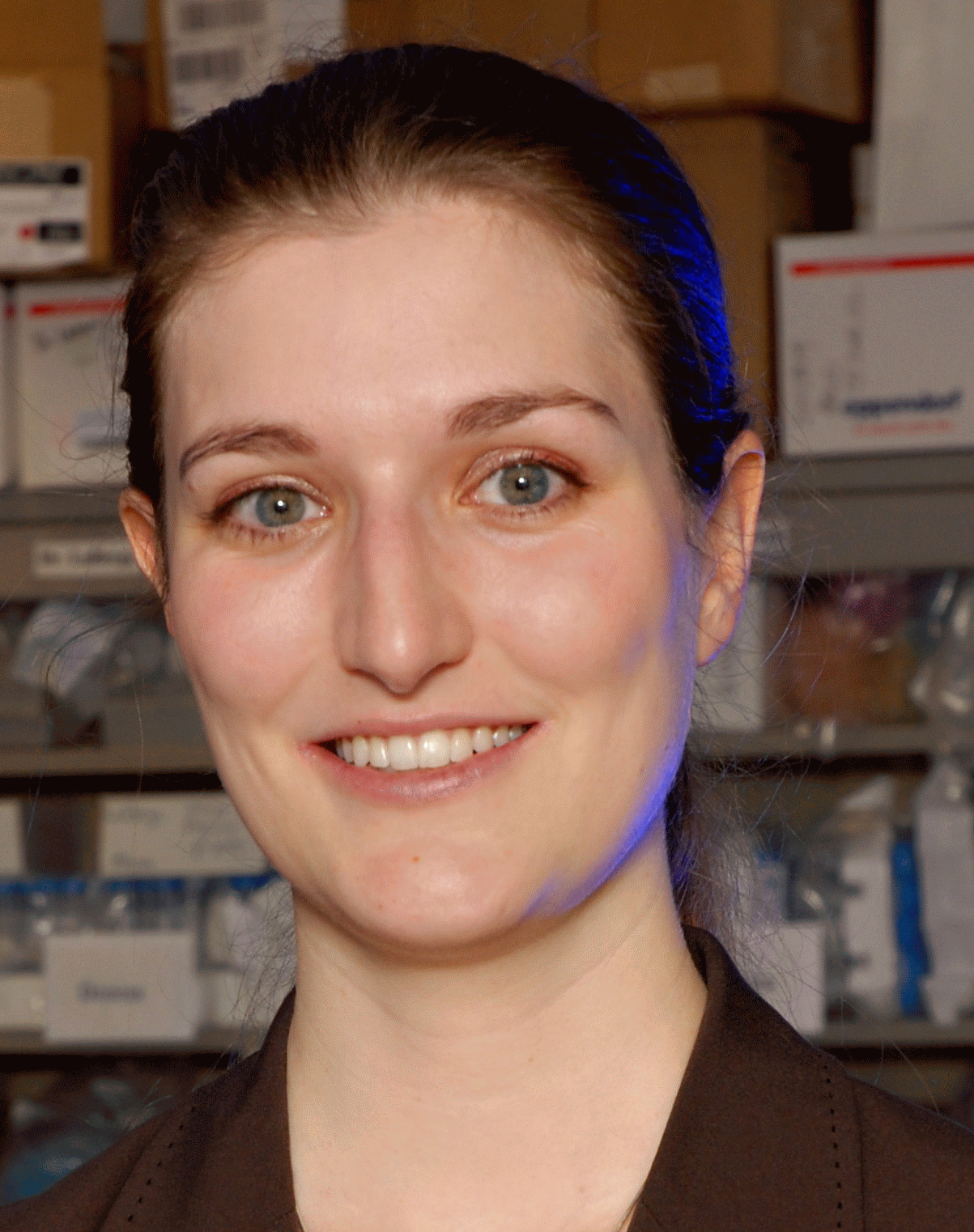
3. Heparin Biosensors (Recording
date 01/09/07)
Guest: Jon
Behr (graduate student, MIT Biological Engineering in the group of
Professor Ram Sasisekharan and in conjunction with Professor Scott Manalis,
MIT)
Citation : Milovic, et al. PNAS, 2006, 103, 36 13374
Links : MP3 - Heparin on Wikipedia - Heparin
as a Drug - Anticoagulant
Use
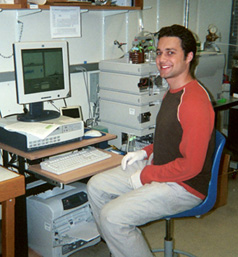
4. Elasticity of Fibronectin (Recording
date 01/10/07)
Guests: Professor Stefan Zauscher (Duke University, Mechanical Engineering
and Materials Science), Yee Lam (graduate student, Duke University, Mechanical
Engineering and Materials Science)
Citation : Abu-Lail, et al. Matrix Biology 2006 25 175
Links : MP3
-
Fibronectin
on PubMed - Fibronectin -
GFP - Pulling
Proteins - Worm-like Chain
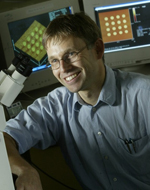
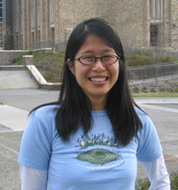
5. Sacrificial Bonds in
Biological Materials (Recording date 01/12/07)
Guest: Dr. Georg Fantner (MIT Biological Engineering and Materials Science
and Engineering, from the group of Professor Paul Hansma, UCSB)
Citation : Fantner, et al. Biophys. J. 2006 90, 1411)
Links : MP3 -Worm-like Chain on Wikipedia - Sacrificial
Bonds - Sacrificial
Bonds [2]
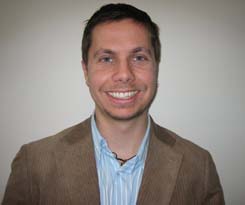
6. Structured Water Layers (Recording
date 0/15/07)
Guest: Micheal J. Higgins (Senior research fellow in conjunction with the
group of Professor Suzi Jarvis (Trinity College Dublin, Ireland)
Citation : Higgins, et al. Biophys. J. 2006 91, 2532
Links : MP3
- Lipid Structures
- Message Board - Map of Ireland -
Photo of Trinity
College - Biological
Water - Protein Hydration

7. Boundary Lubrication (Recording
date 01/17/07)
Guests: Professor Jacob Klein (Oxford University
UK and Weizmann Institute, Israel)
and Walter Briscoe (Oxford UK)
Citation : Briscoe, et al. Nature 2006 444, 191 - 194)
Links : MP3
-Map of the Middle
East- Map of Israel
- Surface
Force Balance - Lipid
Bilayers
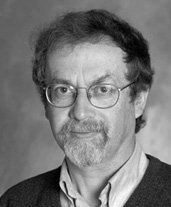
8. Lipid
Bilayer Formation (Recording
date 01/16/07)
Guests: Professor Jurgen Fritz (International
University Bremen; soon to be Jacobs University Bremen, Germany)
Citation : Pera, et al. Langmuir 2007 in press
Links :MP3
- Map of Germany -
Bremen Town Musicians
Fairy Tale - Lipid Structures- Membranes
- Cantilever
Sensors
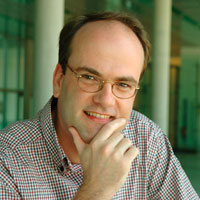
9. Mechanics of Diseased Single
Cells: Malaria (Recording Date 01/18/07)
Guests: Professor Subra Suresh (MIT, Materials Science and Engineering) and
Dr. John Mills (MIT, Materials Science and Engineering)
Citation : Suresh, et al. Acta Biomaterialia 2005 1, 15
links : MP3
- Malaria on Wikipedia-
Malaria by CDC - Blood
- Red Blood Cells
- RBC
mechanics
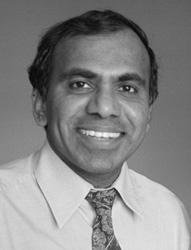
Guests: Professor Alan Grodzinsky (MIT, Electrical Engineering and Computer Science, Mechanical Engineering, Biological Engineering) and Dr. Laurel Ng (Titan Corporation, San Diego, CA)
Citation : J. Biomech., Vol. 40, Issue 5, 1011-1023, 2007
Links : MP3 - Intradiscal Pressure (Prof. Grodzinsky's intervertebral disc injury)
A special thank you to Prof. Doug Lauffenburger and
the Biological Engineering Division
which provided funding for support of
this project.